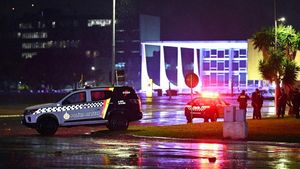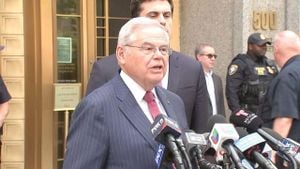The Catholic Church has recently scored a significant legal victory with the High Court ruling it is not vicariously liable for the actions of a priest who allegedly abused children. The case centers around the actions of Father Bryan Coffey, who was accused of abusing a five-year-old boy during family gatherings back in 1971. This ruling overturns previous decisions from lower courts which widely interpreted vicarious liability to hold the church accountable for the actions of individuals not directly employed by it.
The 2023 ruling had initially found the church responsible for the harm caused to the victim, who was awarded $200,000 after asserting he was sexually abused by Coffey during two family events. Coffey was known to have been convicted of multiple counts of sexual abuse against other children and was sentenced to several years of suspension prior to his death in 2013.
Upon appealing, the Catholic Church put forth the argument stating it could only be held liable for acts committed by actual employees and pointed out the distinction of Coffey's role as being one without formal employment status. It contended this was pivotal, resulting in the High Court siding with them, stating, "a majority of the high court held the principles of vicarious liability are confined to employment relationships."
Previously, the Victorian courts had interpreted Coffey's position as significantly influential, considering him to be under the church’s control. They stated Coffey had enough authority as he had been positioned as a "servant of the diocese." This ambiguity around his employment led to much-speculated interpretations surrounding the church's liability.
Following the ruling, legal experts expressed their concern over the ramifications for survivors of abuse. Many activists and survivors feared this judgment might limit the ability to hold organizations accountable for abuses perpetrated under their supervision, especially when many original witnesses have since died, complicate cases beyond recognition.
One of the lawyers representing the victim expressed disappointment, highlighting the long-fought battle for justice and the difficulties involved. They called for legislative changes, urging swift action to amend the law to prevent similar outcomes for others who might seek recourse against institutions.
Critics of the ruling suggest this decision leaves survivors vulnerable, comparing Australia's stance unfavorably to similar jurisdictions such as Canada and the UK, where institutions can face liability for abuses committed by their affiliates. Maurice Blackburn, a principal lawyer who specializes exclusively in abuse claims, remarked on the historical negligence of institutions concerning allegations of abuse, emphasizing the importance of reforming laws to uphold justice for victims.
Advocates have promised to continue pushing for legislative changes to adapt laws containing vicarious liability's scope and prevent organizations like the Catholic Church from evading accountability. This ruling also sets forth additional discussions surrounding compensation for historic abuse cases, particularly those where perpetrators may no longer be living to confront their actions.
Critics believe the ruling potentially emboldens institutions facing abuse claims, as broader interpretations of liability may now be impinged upon significantly by this decision. It signals to would-be survivors of abuse seeking justice how challenging and convoluted the path may be to receive acknowledgment and redress beyond mere public recognition.
This legal backdrop highlights the contentious dynamics between survivors’ rights and institutional liability, rekindling debates around reforming protocols associated with cases involving vicarious liability. Survivors and their advocates see the need for legislative evolution to address the gaps left by existing laws and practices.
The High Court also delivered rulings on other subjects related to abuse claims, where Stays on claims were rejected, marking some protective measures for survivors against institutional maneuvering. The court's firm stance on permitting claims against institutions was welcomed by many but stands juxtaposed against the reverberation of its ruling on the Catholic Church’s liability.
With the law seen as inadequate for many survivors seeking justice today, advocates now voice stronger calls for changes thought to be necessary for creating more equitable frameworks to address the experiences of victims of historical child abuse.



